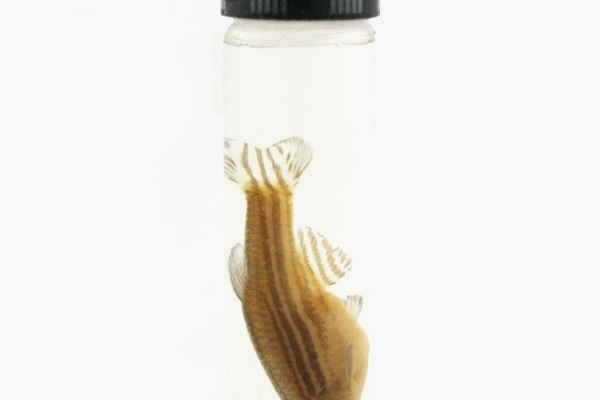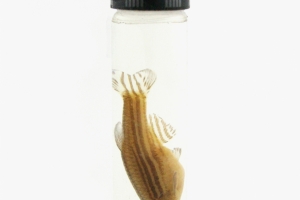
Zebrafish have many remarkable properties, which makes studying them an exciting prospect for many scientists. One of the most interesting properties is the ability of the zebrafish to regenerate various tissues and cells in their body, including their fins, scales and heart tissue after damage. Although this is not unique in the animal kingdom, the advantage of the zebrafish is that the embryos grow very quickly, they have a fully-sequenced genome, and they are easily observable under a microscope. Understanding their regeneration abilities could give scientists clues into how to regenerate damaged human heart tissue, a process that does not occur naturally and leads to many premature deaths. In 2011, the British Heart Foundation signalled their intention to invest £50 million into this kind of research.
This particular zebrafish has been used for a different type of research. It has been genetically engineered to express a special protein during its growth. Green fluorescent protein (GFP) is a naturally occurring protein in the bioluminescent jellyfish Aequorea Victoria, and it has attracted much scientific attention in recent years. This is because the protein can be engineered into other biological organisms, such that they become fluorescent. This zebrafish does not fluoresce strongly green all over, instead the fluorescence acts as a subtle marker under a microscope to track the growth and development of a zebrafish embryo, a process which has shed light upon how cells change and arrange themselves during the growth stages of all living organisms.
Sample ID: 358
Particularities
- Selections
- Categories
- Animal
- Curiosities
- Fluorescent
- Relationships
- Animal | Fish | Fluoresce | Fluorescent | Genetics | Tissue-regeneration
Add materials you find interesting to your own selections.
Use the  button to select a material and get started.
button to select a material and get started.





